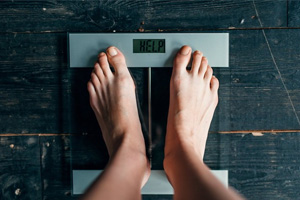How to reduce the risk of common sports injuries?
Learn how to reduce the risk of common sports injuries with expert tips and strategies Discover effective ways to prevent injuries and stay in the game with our comprehensive guide
How to reduce the risk of common sports injuries? It's a question that plagues athletes and fitness enthusiasts of all levels. Sports injuries can be painful, frustrating, and often lead to significant setbacks in training or competition. However, with the right knowledge and strategies, you can minimize the chances of getting injured and stay in the game.

Understanding Common Sports Injuries
1. Types of Common Sports Injuries
- Sprains and Strains
- Fractures and Dislocations
- Tendonitis and Bursitis
- Contusions and Abrasions
2. Risk Factors for Sports Injuries
- Lack of Proper Warm-up
- Overtraining
- Poor Technique and Form
- Inadequate Equipment
3. Common Sports Injury Locations
- Knee Injuries
- Ankle Injuries
- Shoulder Injuries
- Hamstring Injuries
- Concussions and Head Injuries
4. Symptoms and Signs of Sports Injuries
- Pain and Swelling
- Bruising
- Limited Range of Motion
- Instability or Weakness
5. Long-Term Consequences of Sports Injuries
- Arthritis
- Chronic Pain
- Reduced Athletic Performance
- Psychological Impact
6. The Role of Biomechanics in Sports Injuries
- Understanding Body Mechanics
- How Biomechanical Factors Contribute to Injuries
- Preventive Measures through Biomechanical Analysis
7. Statistics on Common Sports Injuries
- Prevalence and Frequency
- Age and Gender Disparities
- Common Injuries in Different Sports
8. The Importance of Early Diagnosis and Treatment
- RICE (Rest, Ice, Compression, Elevation)
- Seeking Medical Evaluation
- Physical Therapy and Rehabilitation
9. Preventing Recurrent Injuries
- Strengthening and Conditioning
- Proper Rehabilitation
- Lifestyle and Nutrition Choices
- Psychological Preparedness
10. Conclusion
- The Significance of Injury Awareness
- The Role of Education in Injury Prevention
Importance of Injury Prevention
1. Reducing Downtime and Recovery
Effective injury prevention measures can significantly reduce the downtime athletes experience due to injuries. This translates to faster recovery and less disruption to training and competition schedules.
2. Saving on Healthcare Costs
Injuries often come with medical expenses. By preventing injuries, athletes and sports enthusiasts can save on healthcare costs associated with treatments, surgeries, and rehabilitation.
3. Sustaining Athletic Performance
Preventing injuries is key to maintaining consistent athletic performance. An injury-free athlete can focus on improving skills and achieving peak performance.
4. Enhancing Long-Term Health
Chronic injuries can lead to long-term health issues. Injury prevention strategies promote overall health, reducing the risk of enduring health problems later in life.
5. Increasing Team Effectiveness
In team sports, a player's injury can weaken the overall team effectiveness. Injury prevention not only benefits the individual but also contributes to the team's success.
6. Preserving Mental Well-Being
Injuries can take a toll on an athlete's mental well-being, leading to frustration and depression. Preventing injuries can help preserve a positive mindset and motivation.
7. Promoting a Culture of Safety
A commitment to injury prevention fosters a culture of safety in sports and physical activities. It encourages responsible practices and the well-being of all participants.
8. Empowering Athletes
By educating athletes about injury prevention, they become empowered to take control of their own well-being. Knowledge is a powerful tool in staying injury-free.
9. Supporting a Lifelong Passion
Injury prevention measures can extend an athlete's ability to participate in their chosen sport or activity throughout their life, allowing them to pursue their passion for longer.
10. Conclusion
Understanding the significance of injury prevention is vital for athletes and sports enthusiasts. It's not just about staying in the game but about ensuring long-term health and well-being.
Proper Warm-up and Stretching Techniques
1. The Importance of a Warm-up
Explaining the crucial role of a warm-up in preparing the body for physical activity. Discuss the physiological changes that occur during a warm-up and their benefits in injury prevention.
2. Dynamic Warm-up Exercises
Introduce a variety of dynamic warm-up exercises that target different muscle groups and joints. Explain how dynamic stretches differ from static stretches and when to use them.
3. Static Stretching Techniques
Discuss the proper way to perform static stretches, emphasizing the importance of holding stretches without bouncing. Highlight specific stretching exercises for major muscle groups.
4. Stretching for Specific Sports
Address the unique stretching requirements for different sports. For example, yoga for flexibility in gymnastics, or hip flexor stretches for runners. Tailor the discussion to various athletic disciplines.
5. Timing and Sequence
Explain when and in what sequence to perform warm-up and stretching exercises. Clarify the importance of timing in relation to physical activity and how it affects injury prevention.
6. Common Mistakes to Avoid
Highlight some of the common mistakes people make when warming up and stretching. These could include improper form, neglecting certain muscle groups, or rushing through the process.
7. The Role of Proprioceptive Neuromuscular Facilitation (PNF)
Introduce PNF stretching techniques and their benefits. Discuss how PNF can enhance flexibility and reduce the risk of injuries, especially in athletes and fitness enthusiasts.
8. Incorporating Foam Rolling
Explain how foam rolling can complement warm-up and stretching routines. Discuss its role in myofascial release, reducing muscle tension, and enhancing flexibility.
9. Personalized Warm-up Plans
Encourage readers to create personalized warm-up and stretching plans based on their fitness levels, activities, and individual needs. Provide guidelines on tailoring warm-ups to specific goals.
10. Conclusion
Summarize the key takeaways regarding proper warm-up and stretching techniques. Emphasize that a well-executed warm-up and stretching routine is a cornerstone of injury prevention in sports and exercise.
Choosing the Right Sports Equipment
1. The Impact of Sports Equipment on Performance
Discuss how the choice of sports equipment can significantly affect an athlete's performance. Highlight the relationship between equipment and success in different sports.
2. Factors to Consider When Selecting Sports Gear
Provide a comprehensive list of factors that individuals should consider when choosing sports equipment. This can include factors such as size, fit, material, brand, and more.
3. Selecting the Right Footwear
Discuss the importance of proper athletic footwear. Provide guidance on selecting the right shoes for different sports, as well as tips for ensuring a proper fit.
4. Importance of Protective Gear
Highlight the significance of protective gear in injury prevention. Discuss the types of protective equipment required for various sports and the consequences of neglecting them.
5. Customization and Personalization
Explain the benefits of customized or personalized sports equipment. Discuss options like custom-made shoes, orthotics, and personalized gear for athletes with unique needs.
6. Researching and Reviewing Equipment
Provide guidance on how individuals can research and review sports equipment. This can include reading reviews, comparing options, and making informed choices based on objective data.
7. Balancing Cost and Quality
Discuss the balance between cost and quality when purchasing sports equipment. Offer advice on how to make cost-effective choices without compromising on performance or safety.
8. Testing Equipment Before Purchase
Recommend testing sports equipment whenever possible, especially for items like racquets, clubs, or bikes. Explain the benefits of hands-on testing and how it can inform decisions.
9. Caring for and Maintaining Equipment
Highlight the importance of proper equipment maintenance. Provide tips on cleaning, storing, and extending the lifespan of sports gear to ensure optimal performance and safety.
10. Conclusion
Summarize the key points regarding choosing the right sports equipment. Emphasize that making informed choices about sports gear is essential for both performance and injury prevention in various sports and physical activities.
Maintaining Good Nutrition and Hydration
1. The Role of Nutrition in Sports
Discuss the fundamental role of nutrition in enhancing athletic performance and overall well-being. Explain how proper nutrition impacts energy levels, recovery, and injury prevention.
2. Essential Macronutrients for Athletes
Provide information on the three essential macronutrients: carbohydrates, proteins, and fats. Explain how each macronutrient contributes to an athlete's diet and why they are important.
3. Micronutrients and Their Impact
Discuss the significance of micronutrients like vitamins and minerals in an athlete's diet. Explain their role in maintaining health, preventing deficiencies, and supporting training and competition.
4. Pre-Exercise Nutrition Strategies
Explain the importance of pre-exercise nutrition and hydration. Offer guidelines for selecting appropriate foods and beverages to optimize performance and reduce the risk of dehydration.
5. Hydration and Electrolyte Balance
Discuss the critical role of staying properly hydrated and maintaining electrolyte balance during physical activity. Address the consequences of dehydration and provide strategies for optimal fluid intake.
6. Post-Exercise Recovery Nutrition
Highlight the importance of post-exercise nutrition for recovery and injury prevention. Discuss the timing and composition of recovery meals or snacks for athletes.
7. Special Dietary Considerations
Address dietary considerations for athletes with specific needs, such as vegetarian or vegan diets, food allergies, and gluten intolerance. Offer guidance on meeting nutritional requirements under such circumstances.
8. Supplements and Their Role
Discuss the use of supplements in sports nutrition. Explain when and how athletes might consider dietary supplements and the potential risks and benefits associated with them.
9. Meal Planning and Timing
Provide insights into effective meal planning and timing for athletes. Explain how to structure daily meals, pre- and post-workout nutrition, and competition day meals for optimal performance.
10. Conclusion
Summarize the key points related to maintaining good nutrition and hydration. Emphasize that a well-balanced diet and proper hydration are fundamental to preventing injuries and achieving peak athletic performance.
Listening to Your Body
1. Body Signals and Warning Signs
Discuss the importance of recognizing and understanding the signals and warning signs that your body provides during physical activity. Explain common signs of fatigue, pain, and discomfort.
2. The Connection Between Pain and Injury
Explain the relationship between pain and potential injury. Emphasize that persistent or severe pain during exercise should not be ignored, as it could indicate an underlying problem.
3. The Difference Between Discomfort and Pain
Help readers distinguish between normal discomfort associated with exercise and pain that requires attention. Provide examples of sensations that fall into each category.
4. Monitoring Physical Stress and Overtraining
Discuss the risks of overtraining and the importance of monitoring physical stress. Explain how pushing the body beyond its limits can lead to injuries and offer strategies for avoiding overtraining.
5. The Role of Rest and Recovery
Highlight the significance of rest and recovery in injury prevention. Explain the body's need for adequate sleep, rest days, and active recovery to repair and strengthen itself.
6. The Psychological Aspect of Listening to Your Body
Discuss the psychological aspects of tuning into your body. Explain how mental and emotional stress can manifest physically and impact performance. Provide strategies for managing stress and emotions in sports and exercise.
7. Importance of Regular Check-ups
Emphasize the importance of regular medical check-ups and screenings, especially for athletes. Encourage readers to consult healthcare professionals for preventive measures and early injury detection.
8. Goal Setting and Adjustments
Explain how setting realistic goals and adjusting them based on your body's feedback is crucial for injury prevention. Discuss the concept of periodization in training and the importance of adapting to changing circumstances.
9. Seeking Professional Guidance
Discuss the benefits of seeking guidance from coaches, trainers, and healthcare professionals. Encourage athletes to consult experts when in doubt about their body's signals or training strategies.
10. Conclusion
Summarize the key takeaways about listening to your body. Emphasize that paying attention to your body's signals and responding appropriately is essential for injury prevention, performance enhancement, and long-term well-being.
Training Smart: Gradual Progression and Cross-Training
1. The Importance of Smart Training
Discuss the significance of training intelligently and avoiding sudden, excessive demands on your body. Emphasize how gradual progression and cross-training play a vital role in injury prevention.
2. Gradual Progression in Exercise
Explain the concept of gradual progression in physical training. Provide guidelines on how to incrementally increase intensity, duration, and frequency of workouts to prevent overuse injuries.
3. The Role of Periodization
Discuss the concept of periodization in training programs. Explain the importance of structured cycles that balance intensity, volume, and recovery to minimize the risk of injury.
4. Cross-Training Benefits
Highlight the advantages of cross-training, including improved fitness, reduced risk of overuse injuries, and enhanced overall performance. Explain how incorporating different activities can provide a well-rounded approach to training.
5. Selecting Complementary Activities
Offer guidance on choosing complementary activities for cross-training. Discuss how to select activities that target different muscle groups, enhance cardiovascular fitness, and reduce the risk of mental burnout.
6. Preventing Overuse Injuries
Discuss how overuse injuries can result from repetitive movements. Provide strategies for preventing these injuries through cross-training, rest, and variation in exercise routines.
7. Recognizing Signs of Overtraining
Explain the signs and symptoms of overtraining and how they can lead to injuries. Encourage readers to be vigilant and responsive to early indicators of overtraining.
8. Customized Training Plans
Discuss the benefits of customized training plans tailored to individual goals, needs, and fitness levels. Encourage readers to seek expert guidance in developing such plans for optimal injury prevention and performance enhancement.
9. The Role of Recovery in Smart Training
Emphasize the importance of rest and recovery in a smart training regimen. Discuss how adequate rest and proper recovery techniques can enhance the body's ability to adapt and reduce the risk of injuries.
10. Conclusion
Summarize the key points about training smart through gradual progression and cross-training. Highlight that these strategies are essential for minimizing injuries, improving performance, and fostering long-term physical well-being.
The Role of Rest and Recovery
1. Understanding the Importance of Rest
Explain the fundamental importance of rest and recovery in sports and physical training. Discuss how adequate rest is essential for the body to repair, rebuild, and adapt to exercise stress.
2. Types of Rest and Their Significance
Describe different types of rest, including passive, active, and sleep. Discuss the significance of each type in the context of recovery and injury prevention.
3. Sleep and Its Impact on Recovery
Explore the role of sleep in recovery. Explain how quality and quantity of sleep affect physical and mental well-being. Provide tips on improving sleep quality for athletes.
4. Nutrition for Recovery
Discuss the importance of post-exercise nutrition in the recovery process. Explain how nutrition aids in muscle repair, glycogen replenishment, and overall recovery. Offer guidelines on post-workout meals and snacks.
5. Active Recovery Techniques
Introduce active recovery techniques and their benefits. Discuss methods such as low-intensity exercise, stretching, and foam rolling for promoting blood flow and reducing muscle soreness.
6. Overtraining and the Need for Rest
Explain how overtraining can lead to injuries and the role of rest in preventing overtraining syndrome. Discuss the signs of overtraining and the importance of recognizing them early.
7. Planning Rest into Training Schedules
Provide guidance on how to plan rest and recovery periods into training schedules. Emphasize the importance of rest days, deload weeks, and recovery cycles in long-term performance and injury prevention.
8. Mental and Psychological Recovery
Discuss the psychological aspect of recovery. Explain the importance of stress management, relaxation techniques, and maintaining a healthy mental state in preventing injuries and improving performance.
9. Seeking Professional Recovery Support
Highlight the benefits of seeking professional support for recovery, such as physical therapy, massage, and other therapeutic modalities. Encourage readers to consider professional help when needed.
10. Conclusion
Summarize the key points about the role of rest and recovery in sports and physical training. Emphasize that incorporating proper rest and recovery practices is essential for injury prevention, performance enhancement, and long-term well-being.
Seeking Professional Guidance
1. The Importance of Professional Guidance
Explain the critical role of seeking professional guidance in sports, fitness, and injury prevention. Emphasize that experts can provide tailored advice and strategies for individual needs.
2. Types of Professionals in Sports and Health
Introduce the various types of professionals available to athletes and fitness enthusiasts, such as coaches, trainers, physical therapists, nutritionists, and sports psychologists. Discuss their areas of expertise.
3. Finding the Right Coach or Trainer
Offer guidance on how to find the right coach or trainer for your specific goals and needs. Discuss qualifications, experience, and the importance of a compatible working relationship.
4. Benefits of Working with a Coach
Highlight the advantages of having a coach in your training or athletic journey. Discuss how coaches can provide personalized training plans, feedback, and motivation to prevent injuries and enhance performance.
5. The Role of Physical Therapists
Explain the role of physical therapists in injury prevention and rehabilitation. Discuss how they can assess and address musculoskeletal issues to reduce injury risk and improve recovery.
6. Nutritional Guidance and Dietitians
Discuss the importance of seeking guidance from dietitians or nutritionists for optimizing nutrition and injury prevention. Explain how they can create personalized meal plans for athletes.
7. Sports Psychology and Mental Coaching
Explain the role of sports psychologists and mental coaches in helping athletes manage stress, enhance focus, and develop mental resilience. Discuss how mental well-being contributes to injury prevention.
8. Injury Rehabilitation and Recovery
Discuss the importance of injury rehabilitation and recovery under professional supervision. Explain how therapists and experts can design effective recovery programs tailored to the specific injury.
9. The Cost and Investment in Professional Guidance
Address the financial aspect of seeking professional guidance. Discuss the costs associated with experts and how this investment can lead to long-term injury prevention and performance improvement.
10. Building a Support Team
Encourage athletes and fitness enthusiasts to build a support team of professionals to cover various aspects of their training and well-being. Discuss how collaboration among experts can yield the best results.
11. Conclusion
Summarize the key takeaways about seeking professional guidance in sports and fitness. Emphasize that working with experts is an essential component of injury prevention and achieving one's athletic and fitness goals.
Frequently Asked Questions (FAQs)
Q1: How important is rest and recovery in sports and exercise?
A1: Rest and recovery are crucial for athletes and individuals engaged in physical activity. Adequate rest allows the body to repair, rebuild, and adapt to exercise stress, reducing the risk of injuries and improving overall performance.
Q2: What professionals can I seek guidance from in sports and fitness?
A2: You can seek guidance from a range of professionals, including coaches, trainers, physical therapists, nutritionists, and sports psychologists. These experts have specialized knowledge to help you achieve your goals and prevent injuries.
Q3: How can I find the right coach or trainer for my needs?
A3: To find the right coach or trainer, consider their qualifications, experience, and compatibility with your goals. It's essential to have a coach who can provide personalized training plans and motivation to reduce injury risk and enhance performance.
Q4: What is the role of sleep in recovery and injury prevention?
A4: Sleep plays a crucial role in recovery and injury prevention. Quality and quantity of sleep significantly impact physical and mental well-being. Improving sleep quality can aid in injury prevention and overall health.
Q5: How can I balance the costs of seeking professional guidance with the benefits?
A5: While seeking professional guidance may involve costs, it is an investment in your long-term well-being. The benefits of injury prevention, improved performance, and tailored support make it a worthwhile expenditure for athletes and fitness enthusiasts.
Previous: What are the key factors for a healthy and pain-free back?
Next: last page










